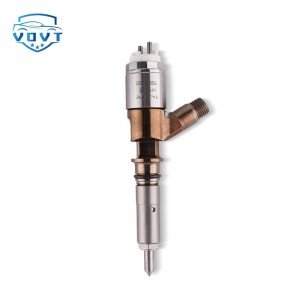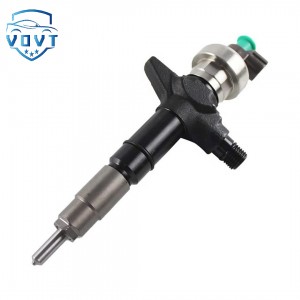New High Quality Diesel Nozzle G3S9 for Injection Nozzle Diesel Engine Parts
Products Description
| Reference. Codes | G3S9 |
| Application | / |
| MOQ | 12PCS |
| Certification | ISO9001 |
| Place of Origin | China |
| Packaging | Neutral packing |
| Quality Control | 100% tested before shipment |
| Lead time | 7~15 working days |
| Payment | T/T, L/C, Paypal, Western Union, MoneyGram or as your requirement |
The function of the fuel injector nozzle
Accurately control fuel injection
1. Metering fuel quantity
Principle: The opening time and stroke of the needle valve, valve seat or solenoid valve inside the nozzle can accurately control the amount of fuel injected each time to match the needs of different engine working conditions (such as idling, acceleration, and full load).
Application:
In diesel engines, the injector needs to quantitatively inject high-pressure fuel (up to 200MPa or more) into the cylinder according to the fuel supply pressure of the plunger pump and the camshaft phase.
In gasoline engines (such as direct injection systems), the injector controls the injection amount with millisecond accuracy through ECU (electronic control unit) instructions.
2. Control injection timing
Function: Ensure that the fuel is injected into the combustion chamber at the best time (such as the end of the compression stroke of diesel engines and before ignition of gasoline engines), optimize combustion efficiency, and reduce nitrogen oxides (NOx) and particulate matter (PM) emissions.
Technical implementation:
Mechanical injection systems (such as traditional diesel engines) control injection timing through camshaft drive;
Electronic injection systems (such as common rail diesel engines, gasoline direct injection) achieve precise timing adjustment through solenoid valves or piezoelectric crystals.
Realize fuel atomization and distribution
1. Atomized fuel
Principle: When the fuel passes through the fine spray hole (diameter 0.1~0.5mm) or special structure (such as pin type, hole type, leaf valve type) inside the nozzle, it is broken into fine oil droplets (particle size is usually 10~100 microns) under high pressure and mixed with air to form a combustible mixture.
Key role:
The more complete the atomization, the larger the contact area between the fuel and the air, the faster and more complete the combustion speed, which can reduce fuel consumption and unburned hydrocarbon (HC) emissions.
In diesel engines, the atomization quality directly affects the combustion explosiveness and exhaust smoke concentration (such as black smoke is mostly due to poor atomization).
2. Control the spray morphology
Spray mode:
Single-hole injection: Commonly used in early diesel engines, forming a single oil beam, suitable for separated combustion chambers (such as swirl chambers, pre-combustion chambers).
Multi-hole injection: Widely used in modern diesel engines and gasoline engines (such as 6~12 holes), the oil beam is distributed in a cone or fan shape, covering the entire combustion chamber (such as the hemispherical combustion chamber of direct injection gasoline engines), ensuring uniform mixture.
Spray angle: Designed according to the shape of the combustion chamber (such as the ω-shaped cylinder of a diesel engine), avoid fuel injection to the cylinder wall or the top surface of the piston, and reduce the risk of carbon deposition and oil dilution.
Adapt to different fuels and combustion systems
1. The particularity of diesel fuel injectors
High-pressure requirements: Diesel engines have a high compression ratio, and the fuel injectors need to withstand extremely high pressures (such as the common rail system can reach more than 200MPa), so high-strength materials (such as heat-resistant alloy steel) and precision processing (such as laser drilling) are used.
Injection pressure: The internal spring or solenoid valve sets the minimum opening pressure (such as 15~30MPa) to ensure that the fuel is only injected under sufficient pressure to avoid low-pressure dripping.
2. Characteristics of gasoline injectors
Low pressure vs. high pressure:
Manifold injection (MPI) system: The injection pressure is about 0.3~0.5MPa, the nozzle structure is simple, and attention is paid to anti-clogging (such as using a ball valve design).
Direct injection (GDI) system: The injection pressure can reach 10~35MPa, and the nozzle needs to be resistant to high temperature and fuel erosion (such as using a piezoelectric solenoid valve).
Anti-carbon deposit design: Gasoline is volatile, and carbon deposits are easy to form on the head of the injector, so self-cleaning needle valves or coating technology (such as precious metal plating) are used.
Fault impact and typical problems
1. Blockage or poor atomization
Cause: Fuel impurities, colloid deposition or improper fuel additives block the spray hole or adhere to the needle valve.
Impact:
Engine power decreases, acceleration is weak, and idle speed shakes;
Diesel engines emit black smoke, and gasoline engines exceed emission standards (such as increased CO and HC);
Partial incomplete combustion leads to increased carbon deposits in the cylinder.
2. Leakage or seal failure
Reason: Needle valve wear, spring weakness or loose closure of the solenoid valve.
Impact:
Fuel seeps into the combustion chamber after shutdown, resulting in "flooding" (wet spark plug) at startup;
Fuel continues to drip at idle, causing the mixture to be too rich, fuel consumption to surge, and black smoke from the exhaust pipe.
3. Abnormal injection timing
Reason: camshaft wear of the mechanical injection system, sensor failure of the electronic control system (such as crankshaft position sensor).
Impact:
Pre-ignition or post-ignition, engine knocking, power reduction;
Emission deterioration (such as NOx increase due to excessive combustion temperature).
Maintenance and care recommendations
Fuel quality control:
Use clean fuel and replace the fuel filter regularly (diesel engines are recommended to replace the fine filter every 20,000 kilometers).
Avoid long-term use of inferior fuel to prevent excessive sulfur content from corroding the nozzle.
Regular cleaning and maintenance:
Clean the nozzle without disassembly (using special cleaning agent) every 20,000 to 30,000 kilometers to remove carbon deposits and colloid;
If it is seriously blocked, the nozzle needs to be removed for ultrasonic cleaning or replacement.
Professional testing:
Use a fuel pressure gauge to detect the injection pressure and an oscilloscope to check the signal waveform of the electronically controlled fuel injector;
For multi-cylinder engines, the working consistency of each cylinder nozzle can be determined through cylinder pressure testing or exhaust gas analysis.





















